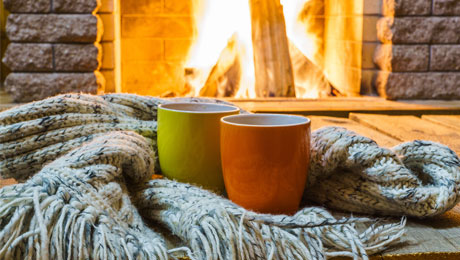Checklist for Winterizing Your Home

It’s important to keep your home in great shape all year long. But winter often brings harsher conditions to homes and homeowners, especially if you live in an area that is usually affected by colder climate. In this post, we’ll offer some simple suggestions to get your home winterized. Feel free to print it out and use it as a handy checklist.
Step 1 – Check doors and windows for drafts.
Inspect the bottom of your exterior doors. Can you feel cool or cold air leaking in from outside? If so, then you’ve got a gap between the floor and the door. Even the tiniest space can let cold air get in and warm air escape. This can be a surprisingly big drain on your home’s energy. Buy a draft snake or draft guard at your local hardware store to save 5 to 30 percent on energy costs. You can also make one yourself using some sand and durable fabric.
Step 2 – Clean and inspect gutters.
Clean your gutters of all leaves and debris. This stuff can clog your gutters and prevent water from flowing down into the downspout. If water can’t flow out of the gutters, it could freeze and cause damage to your roof.
Step 3 – Insulate pipes and disconnect outdoor hoses/sprinkler systems.
Freezing water within pipes can cause costly damage. Frozen water within a pipe can cause it to crack or burst. This not only damages the pipe, but the water can cause damage to your cabinets, floors, and more. You can purchase material specifically designed to insulate pipes, or you can check the web for DIY tutorials to make your own. Bob Vila’s website offers some great tips and a step-by-step guide to winterizing your home’s pipes. Check it out here.
Also, don’t forget to disconnect your outdoor garden hoses and turn off the water supply to your sprinkler lines. Be sure to drain the lines as well.
Step 4 – Check your furnace.
Old furnaces can be inefficient. If yours is 10 years old or older, consider getting an upgrade. If that’s simply not in the budget, at least clean or replace the air filter to improve efficiency.
Step 5 – Inspect and clean fireplace.
Your fireplace can become a serious fire hazard if it is not properly cleaned and inspected before use. You can clean your own fireplace, or you can hire a professional.
Step 6 – Switch the rotating direction of your home’s fans.
On your ceiling fans, there should be a small switch that lets you alternate between clockwise and counterclockwise rotation. In winter, they should be turned to the clockwise position. This helps the warm air move down into the living space. Turn them back to counterclockwise in the warmer months.
Step 7 – Examine exposed ducts.
https://www.thisoldhouse.com/how-to/draining-flushing-electric-water-heaterCheck any and all exposed ducts in your home’s attic, basement or crawlspace. Use a sealant to plug leaks. If you’re not sure what type of sealant to use, consult someone at your local hardware or home improvement store.
Step 8 – Protect your landscaping.
Consider applying compost or mulch to your garden beds to protect them from severely cold temperatures.
Step 9 – Flush your water heater.
Sediment can build up in your hot water tank over time, making it less efficient and more costly to operate. You can flush the old water out through the drain valve to clear much of the particles and sediment. It doesn’t cost anything and can help prolong your water heater’s life. Just make sure you shut off the gas or electricity to the water heater first and follow any and all safety precautions. Here’s a helpful video from This Old House.
Step 10 – Inspect your insulation.
Take a look at the amount of insulation in your home’s attic. According to Energy Star, if the level of your attic’s insulation is just level with or below the floor joists, then you should add more. It’s also important to have the insulation be evenly distributed. In other words, when adding insulation, make it as uniform as possible, not lumpy with high and low spots.
For more tips on winterizing your home, consult a home improvement specialist or a professional at your local hardware or home improvement store.
Photography by [LARISA DUKA] © shutterstock.com
Subscribe To Our Newsletter
Sign up with your email address to receive news and updates.